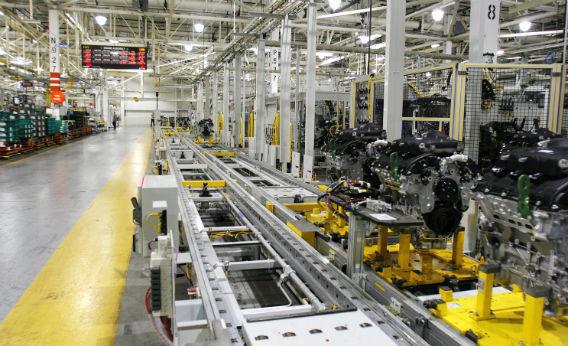Mitt Romney eked out a win in Michigan’s Republican presidential primary Tuesday, overcoming criticism of his opposition to the automotive industry bailout. Why are all major auto manufacturers headquartered in or near Detroit?
Because Henry Ford lived there. Detroit and its environs had a lot to offer the nascent auto industry around the turn of the 20th century. Iron ore was available from the Mesabi Range in Minnesota, and there was ample timber in Michigan itself. (Early car frames were made of wood.) Rail and water routes made it easy to ship cars to Chicago and New York. And Detroit already hosted heavy industry like machine shops and stove works. Toledo, Cleveland, Milwaukee, and Buffalo could have made similar claims, yet none of them became Motown. Detroit’s eventual dominance probably had more to do with a couple of historical accidents than any geographic advantage. First, innovators like Henry Ford and Ransom Olds happened to live in Michigan. Second, automotive executives in early-20th-century Detroit behaved a lot like Silicon Valley executives today: They regularly switched companies and launched spinoffs and startups. This culture of cross-pollination spread innovative manufacturing and design ideas among the Detroit manufacturers. Distant competitors couldn’t keep up with Motown’s research and development operations and eventually failed or sold themselves to Detroit.
There was no indication that Detroit would come to dominate car making in the industry’s early years. According to economist Steven Klepper of Carnegie Mellon University, none of the 69 companies that entered the auto industry (PDF) between 1895 and 1900 was located in Detroit. Olds Motor Works became the city’s first major carmaker when it relocated from Lansing in 1900. Ransom Olds then made a decision that would shape the course of the industry—rather than creating hundreds of small components in-house for his Curved Dash Runabout, he subcontracted much of the work to companies in Detroit’s flourishing manufacturing sector. The people who built the car’s parts eventually learned so much about automotive manufacturing that they went on to launch their own brands. Olds’ subcontractors included the Briscoe brothers, who helped build Buick, and machinist Henry Leland, who created Cadillac and Lincoln. The Dodge brothers also cut their teeth making parts for both Olds and Henry Ford. Ransom Olds, himself, eventually left Olds Motor Works to found the REO car company. A few other executives from Olds founded Chalmers and Hudson. William Durant, the man behind General Motors, was twice forced out of the company, forming Chevrolet and later Durant Motors while he was away. All of these ventures were based in or near Detroit.
The number of U.S. carmakers peaked at 272 in 1909, including major manufacturers in New England and Ohio. During the 1910s, however, the Detroit brands pulled away. In 1915, 13 out of the country’s 15 most popular car brands were in Detroit. Motor City executives, particularly Ford, invested heavily in research and development, distancing their products from the out-of-towners.
The industry further agglomerated—an economics term for the consolidation of an industry in one geographic area—in Detroit, and parts suppliers and skilled laborers followed the largest manufacturers to Motown, making it harder for companies in other regions to compete. Many of the largest remaining non-Detroit carmakers, including Nash (Kenosha, Wis.), combined with Detroit-based brands in the 1950s to form American Motors.* George Romney, father of the GOP presidential candidate, eventually helmed the company, which was bought by Chrysler in 1987.
Got a question about today’s news? Ask the Explainer.
Explainer thanks John Heitmann of the University of Dayton and author of The Automobile and American Life, Steven Klepper of Carnegie Mellon University, J. Douglas Leighton of the Society of Automotive Historians, and Paul Vachon, author of Forgotten Detroit.
Correction, March 1, 2012: This article previously stated that Studebaker became part of American Motors. In fact, the plan to merge Studebaker-Packard with American Motors was never completed. (Return to corrected sentence.)
Video Explainer: Do Airplanes Dump Their Waste During Flight?
.
